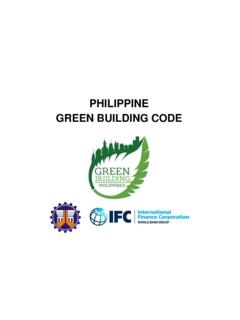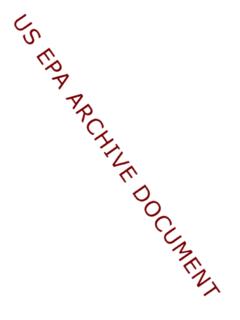Transcription of NFPA 22 - Modares
1 Copyright NFPA NFPA 22 Standard for water Tanks for Private Fire Protection 2003 Edition Copyright 2003, National Fire Protection Association, All Rights Reserved This edition of NFPA 22, Standard for water Tanks for Private Fire Protection, was prepared by the Technical Committee on water Tanks and acted on by NFPA at its November Association Technical Meeting held November 16 20, 2002, in Atlanta, GA. It was issued by the Standards Council on January 17, 2003, with an effective date of February 6, 2003, and supersedes all previous editions. This edition of NFPA 22 was approved as an American National Standard on January 17, 2003. Origin and Development of NFPA 22 In 1909, the NFPA Committee on Gravity Tanks developed the Standard on Gravity Tanks. Amendments were considered in 1912 and 1913, and the standard was adopted in 1914. Revised or amended editions were adopted in 1915, 1917, 1918, 1919, 1922, 1926, 1928, 1930, 1931, 1933, 1936, 1941, 1949, and 1950.
2 The name of the committee was changed to the Committee on water Tanks and its recommendations resulted in changes adopted in 1957, 1958, 1962, 1965, 1967, 1970, 1971, 1974, 1976, 1978, 1981, and 1987. Tanks other than gravity tanks (which, at that time, included concrete reservoirs) and valve pits were first covered in 1913, pressure tanks (formerly covered byStandards for Sprinkler Systems) were covered in 1915, and tank heating was covered in 1922. The standard title has been periodically amended to reflect the expanded scope of the standard. The 1993 edition provided new, environmentally friendly requirements for tank coating systems. Two new chapters were included to cover the design and erection of bolted steel tanks and concrete tanks. Information on fiberglass tanks also was included. These changes, along with other editorial changes, reflected the current information for water storage tank design. The 1996 edition of NFPA 22 consolidated tank care and maintenance information within a single chapter.
3 Further revisions addressed the corrosion resistance of certain tankCopyright NFPA components, access into tanks, the monitoring of internal conditions, and the structural stresses to which tanks are subjected. The figures in Appendix B were revised to reflect current practices. Editorial changes were also made. The 1998 edition further addressed environmental issues. All inspection, testing, and maintenance requirements were removed and added to the appropriate chapter of the 1998 edition of NFPA 25, Standard for the Inspection, Testing, and Maintenance of water Based Fire Protection Systems. The 2003 edition has been changed to conform to the NFPAM anual of Style, 2000 edition. Referenced publications have been updated. Technical Committee on water Tanks Bruce A. Edwards, Chair LMG Property Engineering, MA [I] Rep. Alliance of American Insurers Robert M. Gagnon, Secretary Gagnon Engineering, MD [SE] Phillip Brown, American Fire Sprinkler Association, Inc.
4 , TX [IM] John R. Conrady, Conrady Consultant Services, FL [U] Richard J. Davis, FM Global, MA [I] Rep. FM Global/FM Research Douglas W. Fisher, Harrington Group, Inc., GA [SE] Jack Hillman, Hall Woolford Tank Company, Inc., PA [M] David Hochhauser, Isseks Brothers Incorporated, NY [IM] John D. Jensen, Fire Protection Consultants, ID [SE] Herman J. Johnston, Pittsburg Tank & Tower Company Inc., KY [M] Nicholas A. Legatos, Preload Incorporated, NY [M] Rep. American Concrete Institute Keith McGuire, Colombian TecTank, KS [M] John M. Mitchard, Nuclear Service Organization, DE [I] Tyler Mosman, CCG Facilities Integration, Inc., MD [SE]Copyright NFPA Bill Mow, Amfuel, AL [M] Andrew Rosenwach, Rosenwach Tank Company, Inc., NY [M] Rep. National Wood Tank Institute Frank J. Spitz, Jr., Spitz Fire Protection Design Company, PA [SE] Gregory R. Chip Stein, Tank Industry Consultants, IN [SE] William L. Testa, Grinnell Fire Protection Systems , RI [IM] Rep.
5 National Fire Sprinkler Association Alternates Christian M. Dahms, Nuclear Service Organization (NSO), DE [I] (Alt. to J. M. Mitchard) Roland J. Huggins, American Fire Sprinkler Association, Inc., TX [IM] (Alt. to P. Brown) Kenneth E. Isman, National Fire Sprinkler Association, NY [IM] (Alt. to W. L. Testa) Todd M. Kidd, LMG Property Engineering, NC [I] (Alt. to B. A. Edwards) John J. Sweeney, Smith Engineered storage Products Co., IL [M] (Alt. to K. McGuire) David R. Hague, NFPA Staff Liaison Committee Scope: This Committee shall have primary responsibility for documents on the design, construction, installation, and maintenance of tanks and accessory equipment supplying water for fire extinguishment, including gravity and pressure tanks, towers and foundations, pipe connections and fittings, valve enclosures and frost protection, and tank heating equipment. This list represents the membership at the time the Committee was balloted on the final text of this edition.
6 Since that time, changes in the membership may have occurred. A key to classifications is found at the back of the document. NOTE: Membership on a committee shall not in and of itself constitute an endorsement of the Association or any document developed by the committee on which the member serves. NFPA 22 Standard for water Tanks for Private Fire Protection 2003 EditionCopyright NFPA NOTICE: An asterisk (*) following the number or letter designating a paragraph indicates that explanatory material on the paragraph can be found in Annex A. Changes other than editorial are indicated by a vertical rule beside the paragraph, table, or figure in which the change occurred. These rules are included as an aid to the user in identifying changes from the previous edition. Where one or more complete paragraphs have been deleted, the deletion is indicated by a bullet ( ) between the paragraphs that remain. Information on referenced publications can be found in Chapter 2 and Annex C.
7 Chapter 1 Introduction Scope. This standard provides the minimum requirements for the design, construction, installation, and maintenance of tanks and accessory equipment that supply water for private fire protection, including the following: (1) Gravity tanks, suction tanks, pressure tanks, and embankment supported coated fabric suction tanks (2) Towers (3) Foundations (4) Pipe connections and fittings (5) Valve enclosures (6) Tank filling (7) Protection against freezing Purpose. The purpose of this standard is to provide a basis for the design, construction, operation, and maintenance of water tanks for private fire protection. Nothing in this standard shall prevent the use of systems, methods, or devices that are equivalent in quality, strength, fire resistance, effectiveness, and durability to those prescribed by this standard, provided technical documentation is made available to the authority having jurisdiction that demonstrates equivalency, and the system, method, or device is appropriate for the intended purpose.
8 Retroactivity. The provisions of this standard reflect a consensus of what is necessary to provide an acceptable degree of protection from the hazards addressed in this standard at the time the standard was issued. Unless otherwise specified, the provisions of this standard shall not apply to facilities, equipment, structures, or installations that existed or were approved for construction orCopyright NFPA installation prior to the effective date of the standard. Where specified, the provisions of this standard shall be retroactive. In those cases where the authority having jurisdiction determines that the existing situation presents an unacceptable degree of risk, the authority having jurisdiction shall be permitted to apply retroactively any portions of this standard deemed appropriate. The retroactive requirements of this standard shall be permitted to be modified if their application clearly would be impractical in the judgment of the authority having jurisdiction, and only where it is clearly evident that a reasonable degree ofsafety is provided.
9 Equivalency. Nothing in this standard is intended to prevent the use of systems, methods, or devices of equivalent or superior quality, strength, fire resistance, effectiveness, durability, and safety over those prescribed by this standard. Technical documentation shall be submitted to the authority having jurisdiction to demonstrate equivalency. The system, method, or device shall be approved for the intended purpose by the authority having jurisdiction. Types of Tanks. This standard addresses elevated tanks on towers or building structures, water storage tanks that are at grade or below grade, and pressure tanks. Units. Metric units of measurement in this standard are in accordance with the modernized metric system known as the International System of Units (SI). The bar unit, which is outside of but recognized by SI, is commonly used in international fire protection. Metric units and their conversion factors are shown inTable Table Metric Unit Conversion Factors Name of Unit Unit Symbol Conversion Factor bar bar 1 psi = bar bar bar 1 bar = 10 5 Pa Note: For additional conversions and information, see ANSI SI 10, Standard for Use of the International System of Units (SI): The Modern Metric System.
10 If a value for measurement in this standard is followed by an equivalent value that is expressed in other units, the first stated value shall be regarded as the requirement. A given equivalent value could be approximate. SI units in this standard have been converted by multiplying the number of units by the conversion factor and then rounding the result to the appropriate number of significant NFPA Where sizes for pipe, sheet and plate steel, and wire gages are indicated, they are noted in trade sizes and not by hard conversions. Chapter 2 Referenced Publications General. The documents or portions thereof listed in this chapter are referenced within this standard and shall be considered part of the requirements of this document. NFPA Publications. National Fire Protection Association, 1 Batterymarch Park, Box 9101, Quincy, MA 02269 9101. NFPA 13, Standard for the Installation of Sprinkler Systems, 2002 edition. NFPA 14, Standard for the Installation of Standpipe and Hose Systems, 2003 edition.





